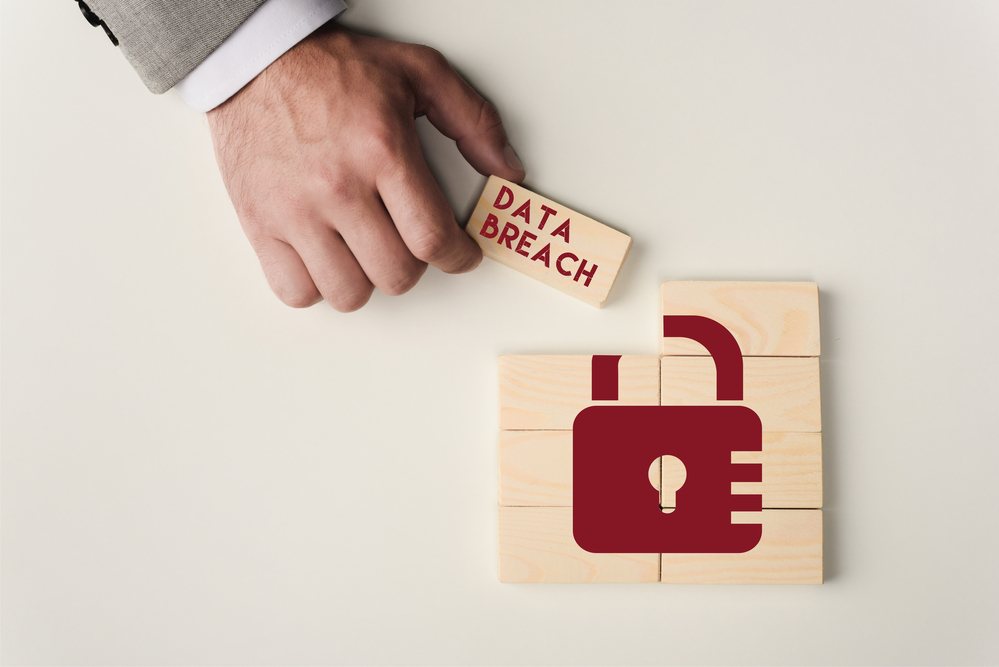
Businesses Expose 12% of Customer Data — Avoiding Data Breaches & What to Do When They Happen
Apr 3, 2024 4 minutes
It’s a frightening reality: 12% of businesses are exposing their customers’ private data. Data breaches cost companies tens of billions of dollars each year, but the financial damage is only the tip of the iceberg.
The personal data of customers, including contact information, social security numbers, and credit card numbers, is being put at risk. So how can businesses protect themselves from data breaches?
Types of Data Breaches
Data breaches come in many shapes and sizes, and they can occur in any organization, from small businesses to large corporations. They can range from small-scale incidents that may only affect a handful of customers to large-scale incidents that affect millions of customers.
Phishing, Malware, and Ransomware
The most common types of data breaches include malicious attacks, such as hacking, ransomware, and phishing. These kinds of cyberattacks often involve criminals sending malicious emails or links to unsuspecting customers, hoping to gain access to their data.
Insider Threats
Another type of data breach is the insider threat. This occurs when an employee or other person with access to a company’s systems has malicious intent or acts carelessly and exposes customer information.
Insider threats can be incredibly difficult to detect, as they often go unnoticed until it’s too late.
Database Breaches
Database breaches can also occur when hackers gain access to a company’s database and steal sensitive information from there. This type of breach is often caused by vulnerabilities in the system or weak passwords, which makes it easier for hackers to gain access.
Insecure APIs
APIs are often used by companies to allow third-party applications to access their systems. If these APIs aren’t properly secured, hackers can use them to gain access to customer data.
DDoS Attacks
DDoS (Distributed Denial of Service) attacks are often used by hackers to overwhelm a company’s systems, making them unusable. This type of attack can be incredibly damaging, as it can prevent customers from accessing the services they need, and in some cases, lead to data being stolen.
The Impact of Data Breaches
Data breaches are a growing concern for businesses, especially those that collect and store large amounts of customer data. When a data breach occurs, customer data is exposed and can be used for identity theft, financial fraud, and other malicious activities.
As a result, businesses suffer from significant financial losses, reputational damage, legal risks, and customer dissatisfaction.
The key to avoiding data breaches is to create a comprehensive customer data protection and privacy policy that covers all aspects of the organization’s data management. This should include:
- policies on data access and storage,
- employee training and education,
- data encryption,
- and third-party security protocols.
It should also include a comprehensive incident response plan to ensure that any data breach is identified and addressed quickly.
In addition, businesses should invest in data security solutions such as firewalls, intrusion detection, and malware protection. Regularly scheduled vulnerability assessments and penetration tests can also help identify and address potential security issues before they become a problem.
Consumers should also do their part to protect themselves against cybercriminals. Enabling two-factor authentication, using antivirus software, and being informed about data collection activities will lead to higher security.
Merchant Responsibilities After a Breach
If a merchant experiences a data breach involving payment card information, they have several critical responsibilities to fulfill.
Notify Relevant Parties
- Immediately inform their merchant bank (aka acquiring bank) about the suspected or confirmed breach. The merchant bank will then notify the card brands like Visa.
- Notify law enforcement and work with forensic investigators to determine the source and scope of the breach.
- If personal information of customers was exposed, notify affected individuals as quickly as possible, as required by state data breach notification laws.
Investigate and Contain the Breach
- Conduct a comprehensive investigation using forensic experts to determine what systems were affected and what information was exposed.
- Quickly take steps to contain the breach, secure systems, and fix vulnerabilities that led to the compromise.
- Preserve evidence and document the investigation thoroughly.
Provide Information and Assist with Fraud Prevention
- Provide details to their merchant bank to identify the accounts at risk, determine if the compromise is ongoing, and take steps to minimize fraud losses.
- Supply information to their merchant bank to prove they were compliant with PCI DSS requirements at the time of the breach.
Possible Fines and Penalties for Merchants
We’re not just talking about the consequences of a lack of cybersecurity, like not having backups or firewalls or preventative measures in place. This section is for less obvious consequences.
- Merchants may face fines from the payment card brands like Visa if they were not compliant with PCI DSS requirements when the breach occurred.
- They may be liable for card reissuance costs and fraudulent charges if it’s determined they were responsible for the breach due to negligence or non-compliance.
- Merchants can also face penalties from the Federal Trade Commission and state Attorneys General for unfair or deceptive practices if they mishandled customer data.
- The merchant’s acquiring bank may increase their transaction processing fees or even terminate their merchant account entirely if the breach resulted from PCI non-compliance.
Developing a Data Breach Prevention Plan
Developing a data breach prevention plan is an essential part of any business’s data security strategy. By proactively identifying and addressing potential security vulnerabilities, companies can protect their customers’ data and avoid costly damages both to the business and the customer.
Step 1 – Assessing Customer Data
Start by assessing the types of customer data the business holds, where it’s stored, and how it’s accessed. It’s also important to look at the organization’s procedures for handling sensitive data and identify any gaps in security.
Companies should also look into third-party services they use to handle customer data and make sure they’re up to date with their own security policies.
Step 2 – Review Security Measures
It’s also important to review any current security measures in place and to keep up with the latest security protocols and technologies. Companies should look into encryption and other security measures designed to protect customer data and invest in employee training that focuses on data security best practices.
Additionally, businesses should consider implementing a customer data privacy policy that outlines the company’s commitment to protecting customer data and the steps taken to ensure data security.
Step 3 – Set Up Regular Security Audits
Finally, companies should consider setting up regular data audits to detect potential security issues and ensure that customer data is being managed in accordance with the security policy.
By taking these steps, businesses can protect their customers’ data and keep their business safe from the damaging effects of data breaches.
How to Securely Backup Consumer Data
No matter how secure a company’s data protection and privacy policies are, there is always the possibility of a data breach or other catastrophic event. As such, it is important for businesses to have an effective data backup strategy in place to protect customer data in the event of a disaster.
Encrypt All Customer Data
One of the most important steps businesses should take is to ensure that all customer data is encrypted. This ensures that even if an unauthorized party were to gain access to the data, it would be unreadable and impossible for them to use.
Update Passwords Regularly
Businesses should also make sure to update their passwords regularly and use strong, unique passwords for each account. This helps ensure that any unauthorized access attempts are quickly detected and blocked.
Have Multiple Backups
In addition, companies should have multiple backups of their customer data stored in different physical locations. This helps ensure that data can be quickly restored in the event of a disaster.
Use Secure Cloud Storage
Businesses should look into using a secure cloud storage provider to back up their customer data. Cloud backup solutions offer an extra layer of security and convenience, as the data is securely stored offsite in case of a disaster or security breach.
Enable Automatic Backups
Companies should enable automatic backups of customer data so that all customer data is backed up on a regular basis. This helps ensure that businesses are prepared for any potential disaster and can restore data with little to no data loss.
Monitor Your Backups
Finally, businesses should monitor their backups regularly to ensure that all data is securely backed up and any potential issues are quickly identified and addressed.
How secure is your data?
We know the importance of securing customer data, especially financial information. If you’re looking for more control over your data, speak with us at DirectPayNet. We’ll help you understand and develop a solution to securing customer data as well as link you with a more secure payment processor.
Compliance with legislation such as GDPR (General Data Protection Regulation), CCPA (California Consumer Privacy Act), and more depending on your region is crucial for running a successful business and storing data.





5 thoughts on “Businesses Expose 12% of Customer Data — Avoiding Data Breaches & What to Do When They Happen”